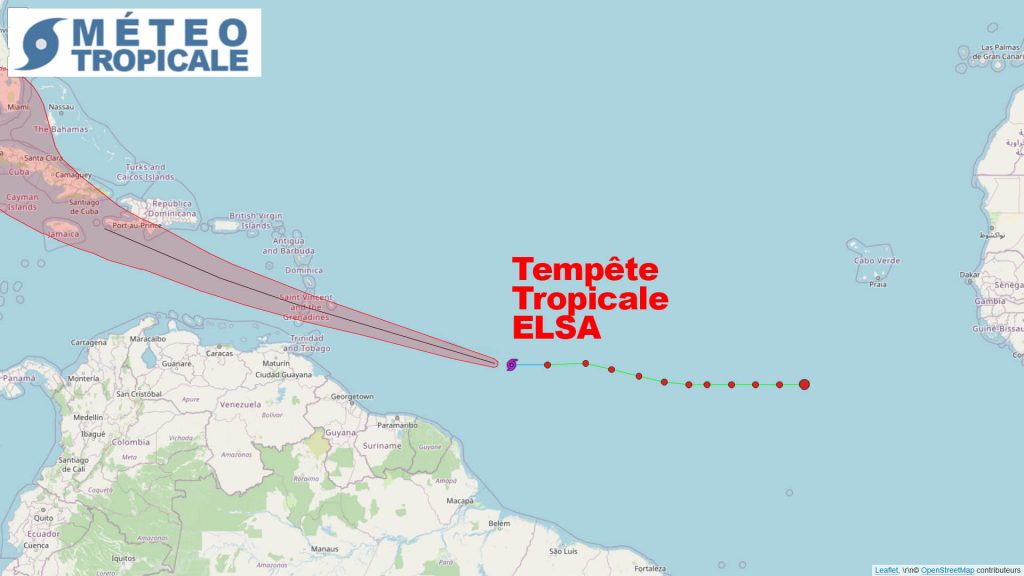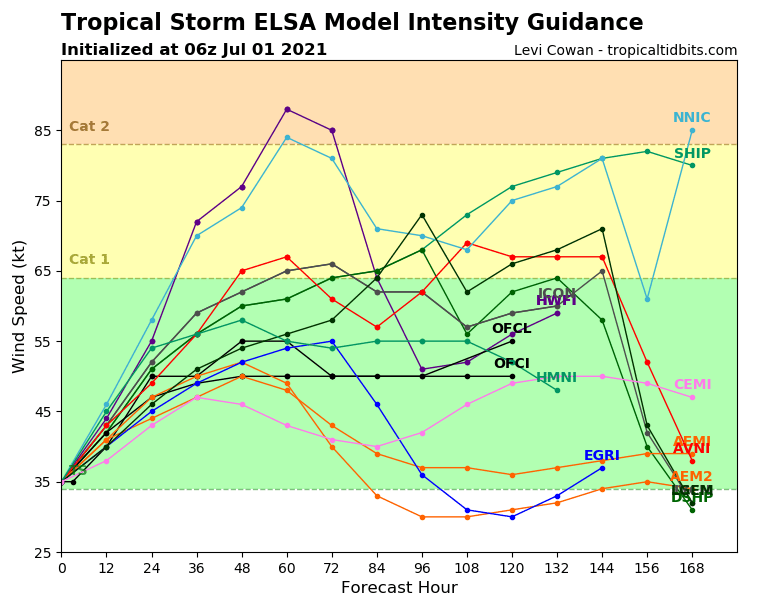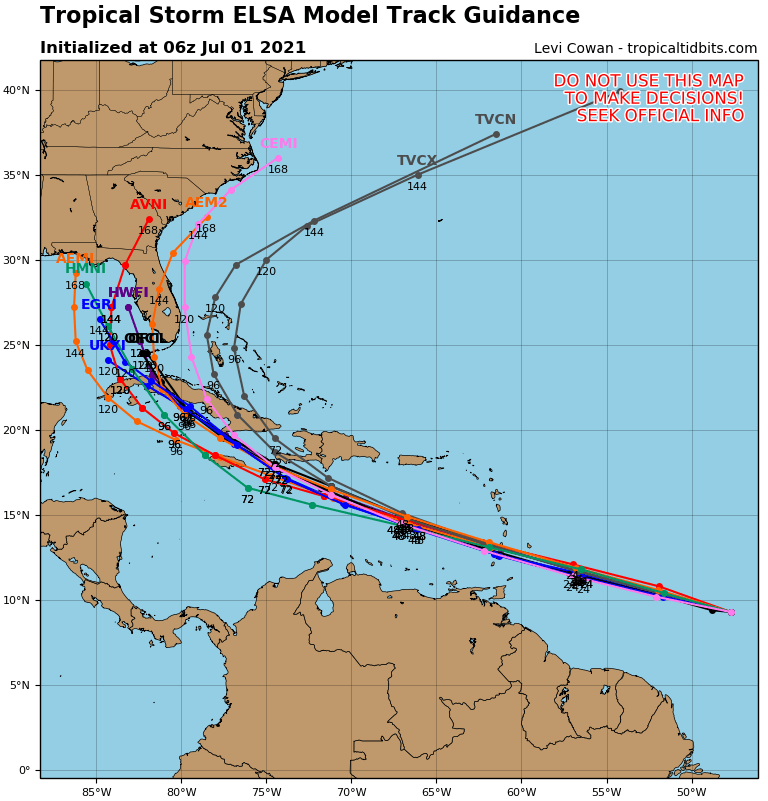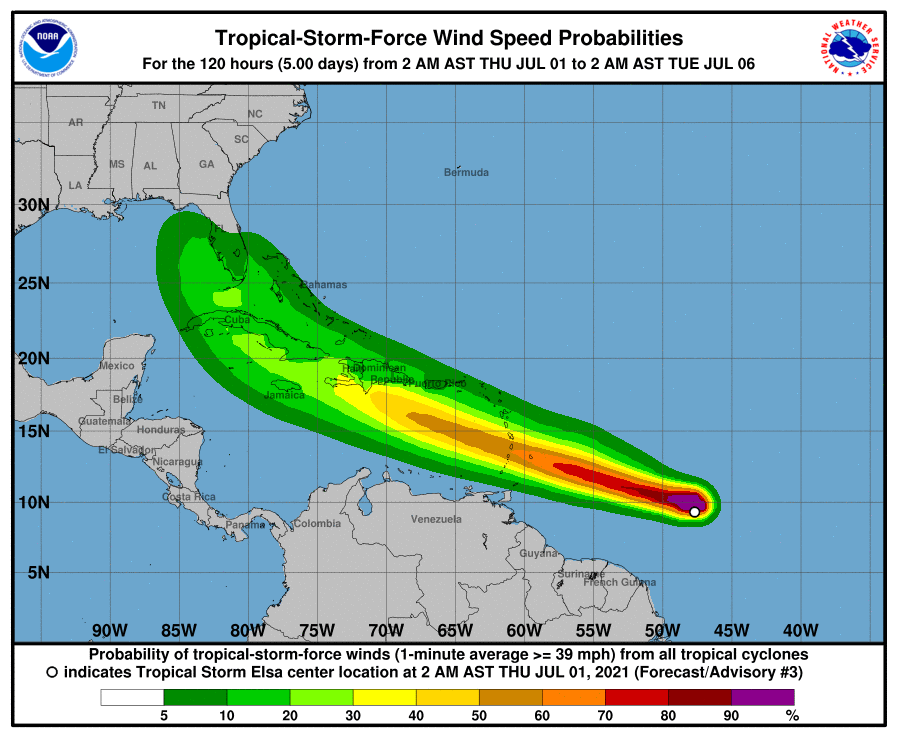
It had been planned since last night and the nhc classified PTC5 as a tropical storm at the end of the night. This tropical storm named Elsa directly threatens the south of the Caribbean arc and should impact the area between Grenada and Martinique (perhaps a little further north depending on its size when crossing).
Intensity of storm Elsa
Elsa was classified as a storm at the minimum intensity of this stage, i.e. 35 kts. The forecast models are in consensus for a fairly rapid strengthening over the next 30 hours, that is to say by the West Indies, but they generally limit this strengthening within the framework of the storm stage. Only two models envisage a hurricane classification, one of which is traditionally very pessimistic.
Conditions remain favorable on its trajectory but the fairly marked acceleration of its movement (22 kts over the last hours) could limit its reinforcement potential by hampering its organization quite a bit.
Trajectory of Storm Elsa
Risks for the territories
There are globally 3 areas with different risks:
- The zone of passage of the cyclone: it is a standard cyclonic risk with strong wind from the north sector on approach, a little calm in the center and a big change in the south sector afterwards. rainfalls can be very heavy.
- To the north of the transit zone: there is a cyclonic risk linked mainly to the force of the wind and to rainfalls. No big changes in the direction of the wind but a very sustained wind throughout the duration of the phenomenon. The risk of heavy rainfalls is significant.
- To the south of the transit zone: the winds will be weaker but from the western sector dominant which can cause a very unusual disturbance on the Caribbean coast of the territories concerned (for the moment, south Saint-Vincent, Grenadines, Caricaou and Grenada ).
Conclusion
Tropical Storm Elsa is the 5th cyclone of the season. It thus breaks a record by being the 5th earliest cyclone of the season.
It represents a real risk for the south of the Caribbean arc. Boats in the Grenadines need to be very careful with the shifting wind to the west. For the territories located to the north of the trajectory, the wind could be very strong with gusts potentially of the order of 60 kts (Saint Lucia and Martinique). Even further north (Dominica and Saint-Vincent) the gusts can also sometimes be quite strong but without exceeding 45/50 kts. For the northern islands, there are no particular risks.
In tomorrow's point, I will talk about the risk for the Dominican Republic, Haiti and Cuba.
Image credit: Tropical tidbits, NOAA / NHC et UW-CIMSS





